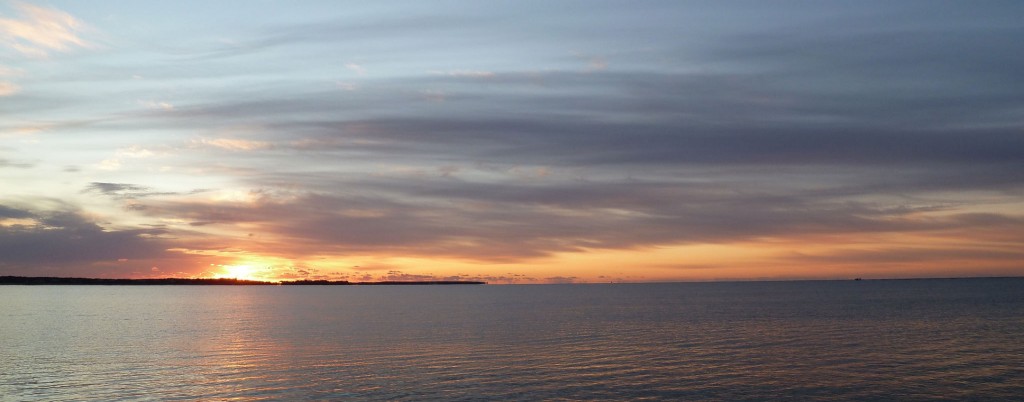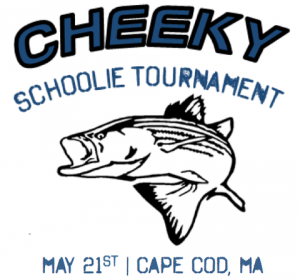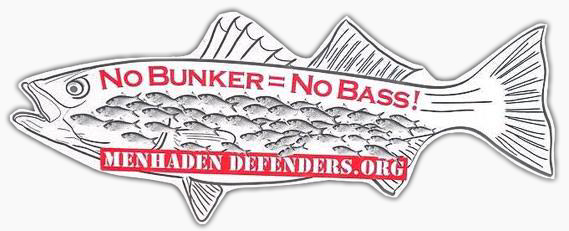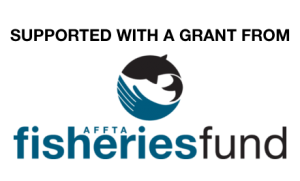U.S. Retreats on Fish Conservation for 1st Time in 40 Years
October 14, 2014 – Brad Sewell
The Magnuson-Stevens Fishery Conservation and Management Act turned 40 this year. And NOAA Fisheries, the federal agency that administers that law, reported coincidentally on Wednesday that forty ocean fish populations or “stocks” have now been rebuilt from depleted levels.
The prudent thing for NOAA fisheries to do at this point, one would think, is to stay the course. You would not expect that the agency would take this opportunity to weaken the guidance it gives to regional fishery management councils on making conservation and management decisions, like setting catch limits, right? But this is what happened yesterday. The agency announced that it had revised its “National Standard One” guidelines in order to give more “flexibility” to the councils.
To translate: flexibility means weakening in this context. It means allowing councils to set higher catch limits, thereby increasing the risk of overfishing and, in instances when a stock is depleted, slowing and possibly jeopardizing recovery. For example, the revised guidance allows catch level reductions to be phased in over several years, even if a stock is already overfished and the science indicates delaying catch reductions will increase the risk of overfishing. The revised guidance also provides more “flexibility” to undercount catch, to reduce conservation of individual species by grouping them with others, or to simply not manage species at all. And the agency confoundingly refused to define “adequate progress” in rebuilding a depleted stock—a finding that would trigger a revisiting of recovery efforts under the law—as including actually rebuilding the population level of the stock. This will allow stocks to linger at depleted levels, rather than requiring steps to be taken to ensure recovery.
This is the first time in forty years, since Magnuson was enacted in 1976, that the U.S. has weakened its fisheries conservation policy. Congress strengthened the conservation requirements in the law in 1996, adding requirements to rebuild depleted fisheries, because in too many instances, fishery managers used flexibility in the law to accede to pressure to allow unsustainable fishing. In 2006, Congress again strengthened the law to require catch limits to prevent overfishing. Most recently, in 2009, the Bush Administration strengthened the National Standard One guidelines to help implement the 2006 statutory amendments.
The stronger conservation requirements have paid off.
As NRDC’s 2013 “Bringing Back the Fish” report showed, nearly two-thirds of fish stocks placed in rebuilding plans had been rebuilt to healthy population levels or had made significant progress. Not only have 40 previously depleted fisheries been rebuilt to healthy levels, but the percentage of federal stocks known to be subject to overfishing has also dropped by more than half since 2006, from 20% to less than 10%.
The ecological recovery means economic recovery. In 2011, NOAA Fisheries estimated that rebuilding all U.S. fish stocks that year would have generated $31 billion more in sales, supported 500,000 more jobs, and increased the fishermen’s revenue at the dock by $2.2 billion.
Don’t get me wrong: there remains much work to be done. More than three dozen fish stocks (out of 233 tracked by NOAA Fisheries) remain overfished. Certain regions, like New England, the South Atlantic, and the Gulf of Mexico, have more than their fair share of these still-beleaguered fisheries. Hundreds of fish species that are less economically-important but still ecologically-important remain poorly or not managed. Habitat damage that impairs recovery of fish populations and harms ecosystems, discarding or bycatch of unwanted fish and other marine life, and ensuring sufficient forage fish for larger fish and marine wildlife like whales, sea birds, and sea turtles are just several of the other fishing-related problems still awaiting adequate solutions. And climate change is already making its impacts felt in the nation’s oceans, with waters off New England warming faster than virtually any other monitored marine water body in the world.
The revision of the National Standard One guidelines is a missed opportunity to help address these challenges and to maintain continued progress in the evolution of the nation’s fisheries management policy. At a bare minimum, the agency should have done no harm, given the existing policy’s overall success in recovering many of our nation’s most economically important fish populations and the sacrifice that this has entailed for many fishing communities.
Instead, NOAA Fisheries has retrenched. This is a distressing signal for the future of U.S. fisheries, for the communities that depend on them, and for ocean health.
article source: https://www.nrdc.org/experts/brad-sewell/us-retreats-fish-conservation-1st-time-40-years
Mid-Atlantic Council Approves Ecosystem Approach to Fisheries Management (EAFM)
AUGUST 10, 2016
VIRGINIA BEACH, VA – Today the Mid-Atlantic Fishery Management Council unanimously approved a guidance document to facilitate the transition to an ecosystem approach to fisheries management (EAFM) in the Mid-Atlantic. The EAFM Guidance Document is designed to serve as an umbrella document that will enable the Council to coordinate ecosystem considerations across fishery management plans (FMPs).
The Council has been considering mechanisms to introduce ecosystem considerations into the fishery management process since the late-1990s. After a review of the various approaches used around the U.S., and extensive input from fisheries stakeholders through its visioning project, the Council decided in 2011 to pursue a transitional approach which would introduce ecosystem considerations into fishery management actions in a step-wise, evolutionary fashion. This approach is intended to allow the Council to meet its current requirements for the management of individual stocks while moving towards an approach that takes into account interactions at multiple dimensions of the environment and ecosystem.
“The EAFM Guidance Document responds to broad public interest in incorporating ecosystem considerations in the management of marine fisheries and will be a critical tool for the Council as it transitions from single-species management to a more comprehensive, ecosystem-based approach,” said Council Chairman Rick Robins. “One of the most important aspects of this approach is that it will allow for the evolution of our EAFM policy at a rate commensurate with the availability of the science to support it.”
The Council’s EAFM approach is organized around four major ecosystem-related issues: forage species, habitat, climate change and variability, and interactions. Development of the document was informed by a series of four workshops which brought together scientists, managers and stakeholders to discuss each issue and associated best management practices.
The EAFM Guidance Document and supporting documents are available at: www.mafmc.org/eafm
Article source link: http://www.mafmc.org/newsfeed/2016/mid-atlantic-council-approves-ecosystem-approach-to-fisheries-management-eafm-guidance-document
This has a real, even likely possibility, to become the norm in all NOAA regulated fisheries. The key point here is, “The EAFM Guidance Document is designed to serve as an umbrella document that will enable the Council to coordinate ecosystem considerations across fishery management plans (FMPs).
Many folks including most within the Stripers Forever conservation community have been advocating for EAFM to become the standard operating model for the management of our coastal resources. It is the details within the Document that will define the goals and the implementation of management protocol. Until the details can be scrutinized we can’t be certain to what degree the “value” of a species will include or be defined by its recreationally generated economy. We shall wait and see but this policy shift has terrific potential to finally place a real value on wild striped bass and have them managed accordingly……. as a game fish!
-Dean Clark, MA Co-Chair/ National Board Member
Important News Update- ASMFC To Vote On Menhaden Management

© Dean Clark
This newsletter will focus on one development that could be (hopefully) the litmus test for all future marine species management decisions: ecosystem based fisheries management. While most of us are preoccupied doing “field research” on striped bass and chasing golf balls during our leisure time, our dedicated volunteer Ken Hastings attends nearly every Atlantic States Marine Fisheries Commission (ASMFC) meeting as a spokesperson for Stripers Forever. Thank you Ken, you are doing a terrific job and a real service toward our conservation efforts.
Ken reports that during an intense and indecisive debate (8/3/16) on whether or not to increase the menhaden harvest, the ASMFC voted to delay their final decision until their next meeting by which time a scientific assessment of the importance of menhaden to the entire ecosystem will be available. The ASMFC will be shifting menhaden management to ecosystem based management in 2018. Ken reports that conservation was a realistic, not a forgotten concern during the animated discussion!
The conservation argument against increasing the harvest was defiantly put forth by Loren Lustig from PA. Loren is a life-long fisherman and also an environmental educator. Ken explained that “Loren opposed the (harvesting) increase out of concern for how he could explain to his students why we should be gambling with the environment they will inherit from us. WOW doesn’t come close to describing his eloquent defense of the environment we all share.”
We all owe Loren, Ken and those members of the ASMFC who had the courage to stand up to the commercial interests led by the mega-million dollar reduction fishery voice and influence of Omega Protein. Part of the good news is that some members of the ASMFC are showing some backbone and willingness to do what everyone knows is the “right thing” as the appointed stewards of our marine resource and we applaud them for their courage and their wisdom.
What follows is an excerpted argument against increasing the menhaden harvest put forth by the Conservation Law Foundation. It succinctly states why menhaden are so important and is interesting reading. A large and healthy menhaden stock is a prerequisite food source for a healthy wild striped bass population. We must all be concerned and involved in bringing it back to its once abundant status if we ever want to have a healthy striped bass population.
Enjoy your summer and please let the big ones go and become members of our Release a Breeder Club.
Thanks-
Dean Clark, National Board Member/ MA Co-Chair
Menhaden Defenders is a great group of conservation minded anglers and concerned citizens who want to restore Atlantic Menhaden to sustainable levels. For more news updates concerning Menhaden please visit their website and become a member.
Excerpts from a recent Conservation Law Foundation paper stating the arguments against increasing the menhaden harvest.
If managers increase the catch limit, hundreds of millions more menhaden—often called “the most important fish in the sea” because of their role as food for predators—will be removed from the Atlantic Ocean. Here are 10 reasons the (ASMFC) board should not raise the existing catch limit on these forage fish:
1. Don’t mess with success. The ASMFC created the first coast-wide catch limit in 2013 and set the allowable catch lower than the amount taken in preceding years in order to help menhaden rebuild. The quotas leave hundreds of millions more menhaden in the Atlantic to become food for fish, seabirds, and mammals. Early reports suggest that conservation is working and the menhaden population is growing.
2. Predators need menhaden in the water. Last year, the ASMFC committed to shift from single-species management of menhaden to a big-picture approach recognizing that menhaden serve a critical role in the water as food for important predators. Managers should not change the catch limit until scientists and managers complete their work examining how menhaden numbers affect predators.
3. Especially predators recovering from low population numbers. Striped bass and weakfish eat menhaden, and their populations are struggling. Other important species such as humpback whales, eagles, and osprey depend on menhaden for food as they recover from decades of challenges. Taking millions more menhaden from the ocean could harm efforts to rebuild these species by reducing the availability of prey.
4. There is no new science to justify an increase. A decline in forage fish can cause negative impacts that ripple through the ecosystem, so coast-wide catch limits should always be based on the best available science. Managers increased the menhaden quota by 10 percent in 2015 based on the most recent available assessment, but there is no new assessment to turn to this year. Therefore, managers should wait until scientists complete their new plan, including an evidence-based analysis of the health of the Atlantic population and the effect of any change in catch limits on the ecosystem.
5. Menhaden have not recovered their historic range off the Northern and Southern states. There is some evidence of recovery in the Mid-Atlantic and Southern New England, but menhaden remain far below their historic numbers in the Northern and Southern regions of the East Coast. However, if conservation efforts continue, they can be abundant again from Maine to Florida.
6. The Chesapeake Bay is vulnerable. The vast majority of the menhaden fished coast-wide are caught in one relatively small area near the mouth of the Chesapeake Bay, which is also a vital nursery area for many ocean species. An increase in the 2017 quota would intensify fishing in this important and vulnerable estuary, which is already harmed by the loss of important habitats and poor water quality.
7. There are warning signs in the science. The latest peer-reviewed scientific assessment identified a growing number of mature menhaden, indicating that the population is poised to increase. But it also suggests that menhaden are still vulnerable: The overall number in recent years was near historic lows, as was the number of young fish surviving long enough to reproduce and help the population grow.
8. The public supports leaving more menhaden in the water. Atlantic menhaden are a public resource. Over the past decade, comments from stakeholders in every East Coast state have overwhelmingly supported leaving more menhaden in the water as prey for predators. A record 147,700 people wrote in and more than 300 attended a meeting to support conservation management when the ASMFC set the first catch limit.
9. Stability is good. Managers are awaiting a scientific assessment in 2017 and will shift to new ways of managing (ecosystem ed.) fish in 2018. Increasing the catch limit now could be followed by a reversal—an unfortunate “regulatory whiplash” that presents a challenge to businesses. Staying the course with the current catch limit will give businesses the confidence to plan ahead and make sustainable investments. Reducing pressure on forage fish also helps build resilience for wildlife in our changing oceans.
10. Conservation is a smart investment. Giving menhaden time under current catch limits to return to their historic population size and range will deliver the highest benefit to Atlantic coast ecosystems, economies, and fishermen.
Sold Out Cheeky Catch And Release Tournament Huge Success
Dean Clark, Cape Cod, Massachusetts:

Two hundred and forty dedicated fishermen descended on Cape Cod to take part in a 100% catch and release striped bass fishing tournament organized by Cheeky Reels. The Cheeky Schoolie Tournament as it bills itself took place the weekend of May 20th and is a wade and fly fishing only competition. There is no fishing from boats and only fly fishing is permitted. Two person teams combine their catch of their four largest fish and vie for thousands of dollars’ worth of sponsored prizes: Thomas and Thomas rod, Yeti coolers, Simms waders and Fish Pond tackle organizers are but a few of the winnings.
The night before the one day fishing event everyone gathered at the Swan River restaurant in Dennis for the “Captains” meeting which was hosted by Costa Sunglasses. Ted Upton of Cheeky Reels welcomed everyone and briefly went over the rules explaining that this is a fun tournament with various winning categories. In addition to vying for the largest fish there were prizes for the team that caught no fish, a winning category for the team that recorded the smallest fish and another for the team that covered the most miles in pursuit of the schoolie stripers that have invaded the Cape waters.
The next day started early with the distribution of contest kits which included an ID disk to be present in the photos of entered fish along with a ruler which also had to be in the photo of the fish. Included in each anglers kit was a Stripers Forever Tee-shirt which was graciously donated by Black Eel Outfitters of Dennis, MA.
At the Awards event Ted thanked all the generous sponsors and informed everyone that Cheeky is proud to sponsor the Stripers Forever Release a Breeder Club. In the name of conservation he reminded everyone to let the bigger bass go so they may continue to reproduce as the life-blood of the species. Stripers Forever wishes to thank both Cheeky Reels and Black Eel Outfitters for their generous and continuing support of our efforts to conserve wild striped.








